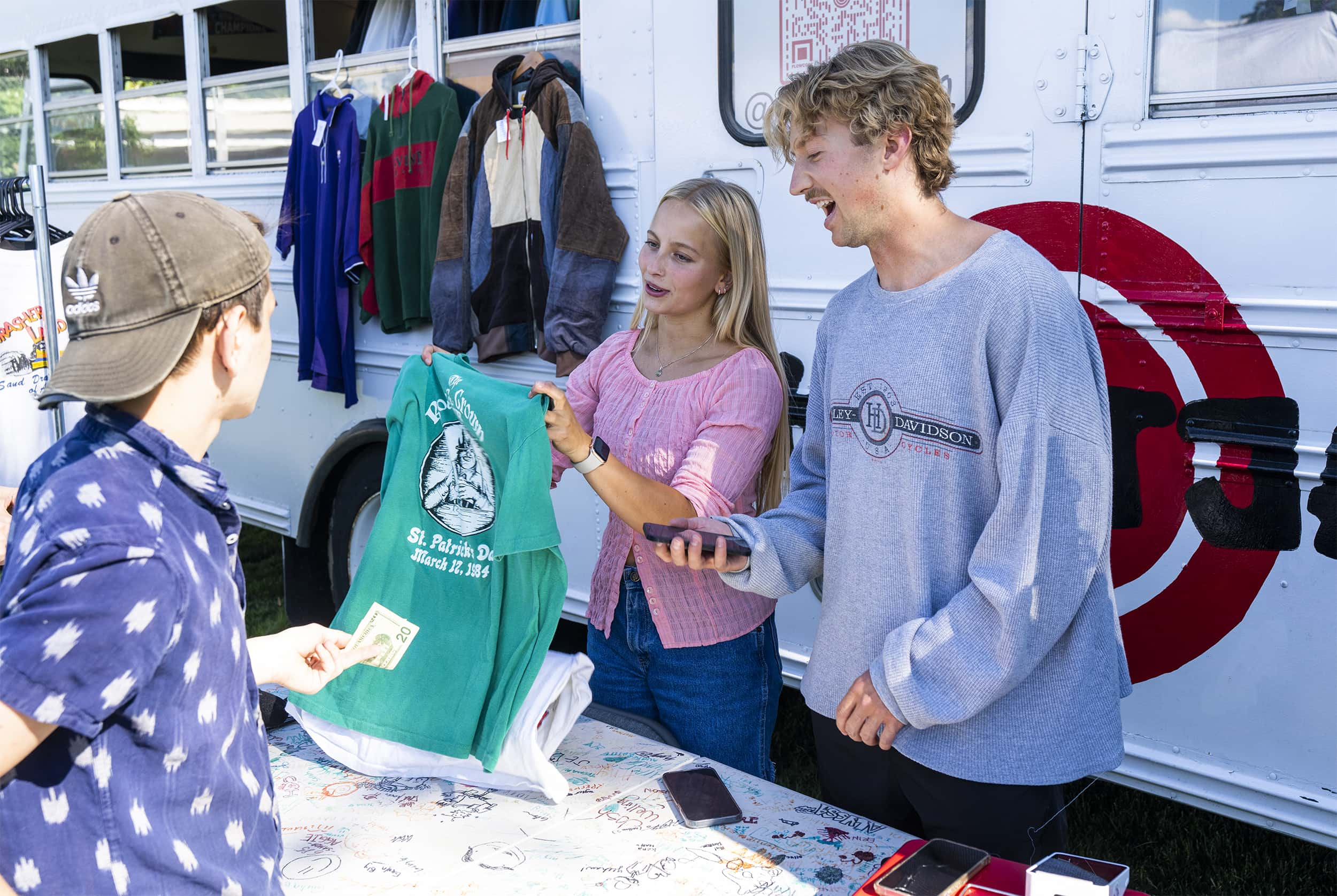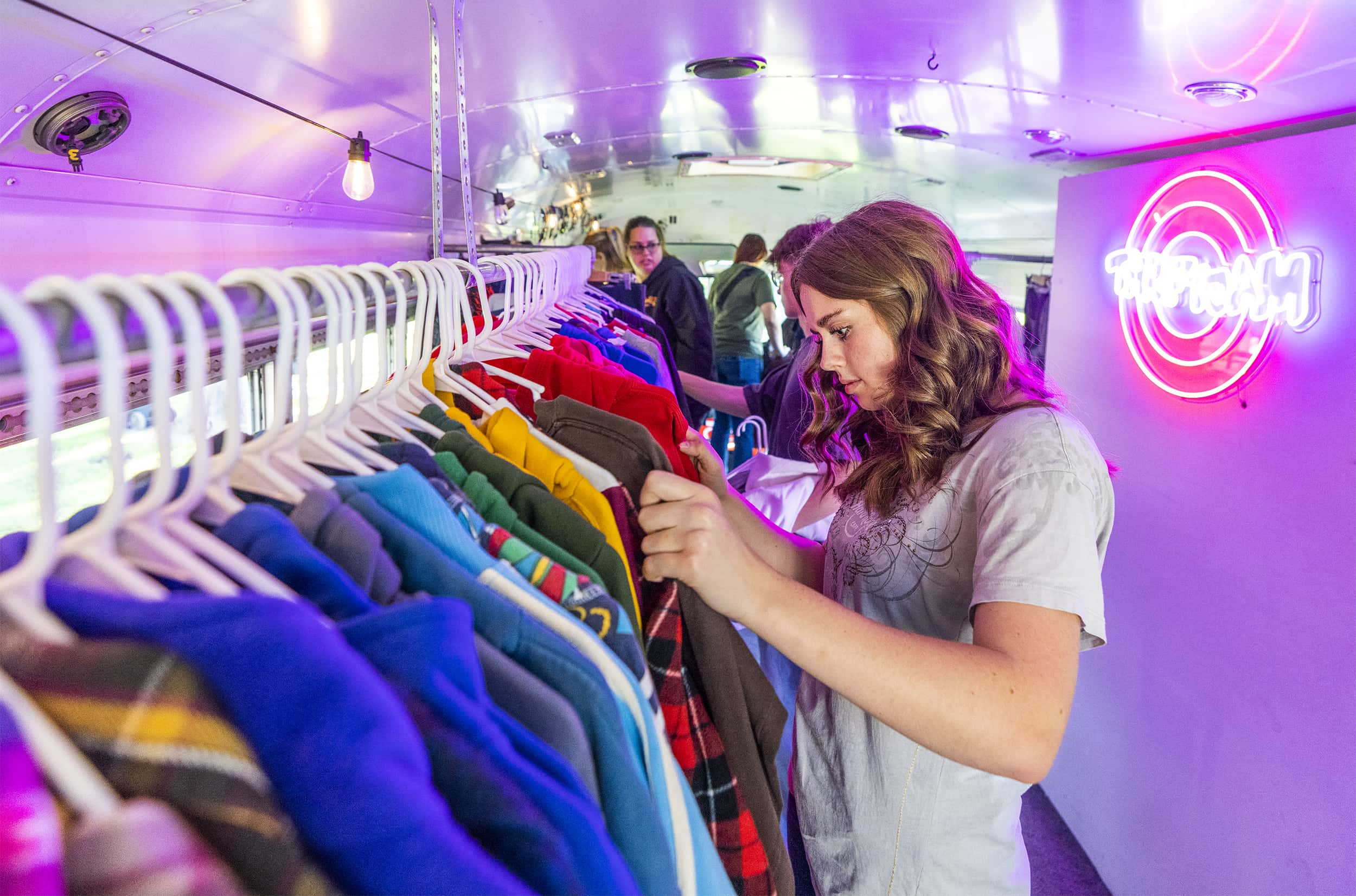According to this article, biodegradable components made of natural or recycled fibers are used in sustainable clothing. These products use less energy and water, grow without the use of pesticides or fertilizers, and don’t undergo any chemical processing, all of which help to lower their overall carbon footprint.
Ellie Cram and Logan James didn’t mince words about the market they were entering when they submitted their idea for a mobile thrift shop to their business class at Utah State University. Now, the couple is shaking the market as their sustainable clothing business captivated the attention of many.

James informed the advisors in the Entrepreneur Leadership Series course at USU’s Jon M. Huntsman School of Business, “We feel that retail shopping is dying. “No one goes to the mall anymore. People want something new and exciting.” He also shared his feelings that this bus where they place their sustainable clothing items could give people that unique, and amazing shopping experience.
Thrift Jam is a mobile clothing store that has become a fixture at pop-up events along the Wasatch Front and has established a presence online in the year since a dating couple from Lehi pitched their idea. Thrift Jam emphasizes selling sustainable clothing that has a touch of vintage in an era of throwaway “fast fashion.”
They were inspired after hearing about a professor who modified a bus so he could traverse the country interviewing entrepreneurs at a think tank.
In an article, James’ mother reportedly learned that the Alpine School District in Orem, Utah, was getting rid of its outdated school buses. They acquired a 2002 bus, had it restored, and painted it white with the Thrift Jam logo, which was taken from the film “Space Jam” (which had taken the red circles from the Warner Bros. “Looney Tunes” introduction).
James used to collect high-end vintage clothing, and Cram enjoyed thrifting for the style and the money it saves, so the two of them decided to start Thrift Jam. Combining those concepts, they chose to focus on secondhand clothing with a preference for items having an element of nostalgia for the 1990s.
Sustainable Clothing
In their pitch to USU, Cram stated, “Our mission is sustainability.” The couple is aware that ‘fast fashion’ and the fashion industries are huge contributors to global warming these days. An inspiration that leads them to pursue a sustainable clothing business.
Cram claimed that 85% of all textiles produced in the prior year ended up in landfills when they made their pitch last year.
According to a 2022 Bloomberg study, the United States discards about 2,150 pieces of clothing per second, or 11.3 million tons, of textile waste annually. The paper said that producing that disposable apparel consumes fossil fuels, polymers, and other pollutants.
Cram and James buy the majority of the clothing for their bus from rack houses, which Cram shared are the final destination for textiles before they are dumped in landfills.
“We buy them by the pound, wash them, and get them cleaned up [to sell],’ she said.
They don’t shop at charity resale stores like Goodwill or Deseret Industries because it has a bad connotation of pulling affordable goods out of circulation for lower-income buyers. They don’t want to deprive anyone who could be in need of it, Cram added.
According to the couple, the idea to sell sustainable clothing first came to them when they began to wonder what happens to unsold goods.
The couple estimates that they have saved 12,000 clothing items in the year since they established Thrift Jam. They traveled by bus to American Fork’s Fork Fest in June, a weekend music festival that served as their first market for the clothing they had begun to sell the previous year. They just recently bought and repaired a second bus for their sustainable clothing business.
The couple continues their study despite their growing business. Cram is a marketing student, whereas James is a finance student.
Where can people see their bus and purchase their sustainable clothing items?
Even though they visit several Utah locations, according to Cram, about 50% of their products are sold online and transported across the country. She said that TikTok attracts a lot of attention to the business.
The two still like to establish themselves in Cache County, though. Cram said that residents in Cache Valley are friendly and interested in the sustainable clothing they are selling.
Cram stated, “We like Cache County.” “People are just nice here.”




